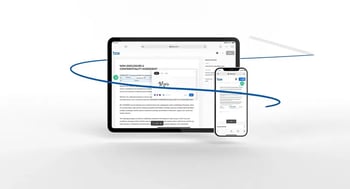Scripting process for engaging explainer videos
Learn to script for success and captivate your audience with your explainer video.
Are you excited to create an explainer video that really communicates your message? 'Course you are. But you're probably also a bit unsure where to start, right? Well, today is your lucky day because we're going to talk about one of the most critical parts of the explainer video production process - the script.
The script is the backbone of your explainer video. It's the roadmap that guides your entire production, ensuring your video stays on message and accomplishes its goal. So buckle up, grab a coffee (or tea if you prefer), and let's get scripting!
1. Understanding Your Audience
The first step in writing your script isn't actually writing at all. It's understanding your audience. Ask yourself, "Who am I making this video for?" The answer to this question will guide the tone, language, and content of your script. Understanding your audience ensures that your video content is relevant and engaging to them.
Imagine trying to explain a new cryptocurrency platform to a group of high school students using the same script as you would for finance professionals. It won't work, right? So, knowing your audience is crucial. Once you've got a clear picture of your audience, it's time to move onto the next step.
2. Setting The Tone
Now that you know who your audience is, the next step is to decide the tone of your video. The tone should match your brand identity, but also be suitable for your audience and the topic of your video. You wouldn't want to use a whimsical, humorous tone for a serious topic like cybersecurity, would you?
Think of the tone as the personality of your video. It's what makes your audience feel connected and engaged with your content. Whether it's professional and serious, friendly and casual, or funny and quirky, make sure it's consistent throughout your video.
3. Structuring Your Script
A good script follows a clear and structured storyline. Typically, it has a beginning, a middle, and an end.
The Beginning - Here's where you hook your viewers in. Start with a problem that your audience can relate to. Make it interesting and relatable.
The Middle - This is where you introduce your solution to the problem. Showcase your product or service, and explain how it solves the problem you outlined in the beginning. Make sure to keep it concise and straightforward. No one likes a rambling explainer video!
The End - Wrap it all up by summarizing the key points and prompting your audience to take action. The call to action could be visiting your website, signing up for a service, or buying a product.
Remember, simplicity is key in explainer videos. Aim to keep your script under 2 minutes. Anything longer and you risk losing your audience's attention.
4. Using a Story
Stories are a powerful tool in video scripting. They can make complex topics more understandable and interesting. If you can weave a story into your script, you're more likely to engage your audience and make your message memorable.
For instance, instead of just explaining how your eco-friendly water bottle works, tell the story of a character who is trying to reduce their plastic waste. The character discovers your product, and their life becomes easier (and more eco-friendly!).
5. Revising and Testing Your Script
Once you've written your script, it's time to revise. Read it out loud, time yourself, and ensure it flows naturally. It's easy to overlook mistakes or awkward phrasing when you're reading silently.
Once you're satisfied, test it out. Share it with colleagues or friends and ask for feedback. You could even perform a table read with voice actors if you have the resources. This will help you understand if your script works well or if it needs further refining.
Final Thoughts
Scripting might seem intimidating at first, especially for explainer videos, but with these tips, you're now better equipped to tackle it head-on. Remember, every great video begins with a great script. Understanding your audience, setting the right tone, structuring your script, weaving in a story, and revising are essential steps to scripting success.
So go ahead, embrace the process, and enjoy the journey of bringing your explainer video to life. Your audience is waiting to be engaged, educated, and entertained.

Written by Emily Malone Marketing Manager for Venture — a full-service video production agency that specialises in producing creative videos & campaigns that get real results.

















